Page Two
"An Overview" & The Northern Half.
"Pyramid Of The Moon,"
"Plaza Of The Moon,"
"Palace Of Quetzal-Papalotl,"
"Palace Of The Jaguars,"
"Temple Of The Feathered Conches,"
& The "Tepantitla Compound."
San Juan Teotihuacán Municipality, México.
Travel & Tour
Pictures, Photos
Information, Images, & Reviews.
George & Eve DeLange
Google Map To Teotihuacán Archaeological Ruins. Museum or Museo.
San Juan Teotihuacán Municipality, México.
View Larger Map
Click On Any Of The Following Links By Amazon.Com
For Books & Videos About Teotihuacán. No Obligation!
We Are Proud Of Our SafeSurf Rating!
Send E-Mail to: George DeLange: [email protected]
We Are Proud Of Our SafeSurf Rating!
| Teotihuacán: "Where Men Became Gods!" Teotihuacán: Looking North Toward Cerro Gordo or "Fat Mountain," In The Center Background. Then Looking Center, Left To Right. The "Pyramid Of The Moon," "Pyramid Of The Sun," And The "Quetzalcoatl Quadrangle." Photo Taken From About 2 1/2 Km. South Of The "Pyramid Of The Moon." On the "Avenue Of The Dead." January 17, 2005. |
|---|
| Teotihuacán: "Where Men Became Gods!" Teotihuacán: Looking South Toward The "Quetzalcoatl Quadrangle." In The Far Left Background. Then Looking Center, Toward The San Juan River. "Mural Of The Puma" Is About 600 Yards To The Left (East). Photo Taken From North Of The "Pyramid Of The Moon." Standing In About The Center Of The "Plaza Of The Moon." Looking About 2.5 Km. South, Down The "Avenue Of The Dead." January 17, 2005. |
Teotihuacán: The place where, "Men Became Gods!"
Teotihuacán (pronounced "teh-oh-tee-wa-khan") means "place where gods were born," reflecting the Aztec belief that the gods created the universe here at this place. This page will take us to the far Northern End of the excavated part of Teotihuacán. Here we will visit the famous structures known as: The "Pyramid Of The Moon," "Plaza Of The Moon," "Palace Of Quetzal-Papalotl, "Palace Of The Jaguars," "Temple Of The Feathered Conches," the "Mural Of The Puma," and "The Street Of The Dead."
"Palace of Quetzalpapalotl":
A word about the "Palace of Quetzalpapalotl," or (Quetzal-Butterfly), which occupies the southwestern edge of the "Plaza Of The Moon." It was excavated and restored in the 1960s, to serve as an example of Teotihuacáns' most elite residences & public buildings. However we now know that the most elite, did not live here. The term "Palacio de Quetzalpapalotl," was originally applied because the excavator thought that he was uncovering strange depictions of a creature with both quetzal bird and butterfly characteristics. More recently the excavator and others have realized that the creature was none other than the ubiquitous Teotihuacan Armed Bird. Also called, "Spearthrower Owl." We have since learned that the "Palacio de Quetzalpapalotl," has had a long history of construction, destruction, & reconstruction. Therefore, today we find the remains of not one but three associated structures: the Palacio de Quetzalpapalotl, another structure buried earlier, known as the "Subestructura de los Caracoles Enplumados," (Substructure of the Feathered Conch Shells), and the adjacent, "Patio of the Jaguars."
"Patio Of The Jaguars:
Most of the dwelling here are embellished with murals containing the images of jaguars. Thus, inspiring the name “Patio Of The Jaguars.” The main plaza is bordered on the east by a temple holding pyramid whose stairway reinforcements are decorated with rattlesnake tails at the lower end. Around its other three sides are very spacious rooms whose portico areas house murals portraying jaguars. Those on the north side are easiest to see.
"Tepantitla Compound:
Located upon the Northeast section, several hundred yards to the East of the "Pyramid Of The Moon," is the "Tepantitla Compound." During the early years leading up to 1942, a series of murals were found in the Tepantitla Compound in Teotihuacán. This compound was important since, the Tepantitla compound provided housing for what appears to have been high status citizens. And upon its walls (as well as much of Teotihuacan) we find brightly painted frescoes.
"The Great Goddess of Teotihuacán," or the "Teotihuacán Spider Woman":
Several of these frescoes contain images of "The Great Goddess of Teotihuacán" or the "Teotihuacán Spider Woman." "The Great Goddess of Teotihuacán," or "Teotihuacán Spider Woman," is a proposed goddess of the pre-Columbian Teotihuacán civilization, in what is now Mexico. The Great Goddess is thought to have been a goddess of the underworld, darkness, the earth, water, war, and possibly even creation itself. To the ancient civilizations of Mesoamerica, the jaguar, the owl, and especially the spider were considered creatures of darkness, often found in caves and during the night. The fact that the Great Goddess is frequently depicted with all of these creatures further supports the idea of her underworld connections. The Great Goddess images have been identified at other locations than Tepantitla – including Teotihuacán's Tetitla Compound, the Palace of the Jaguars, the Temple of Agriculture, and upon several vessels. In many murals, the Great Goddess is shown with many of the scurrying arachnids in the background, on her clothing, or hanging from her arms. She is often seen with shields decorated with spider webs, further suggesting her relationship with warfare. Her nosepiece is the single most recognizable adornment of the deity, finalizing her transformation into the arachnid-like goddess. In both the Tepantitla and Tetitla murals, the Great Goddess wears a frame headdress that includes the face of a green bird, generally identified as an owl or quetzal. She is shown among several spiders and with a yellow body coloration, further distinguishing her from other Mesoamerican deities. Her single most distinguishing feature is a nosepiece consisting of a rectangular bar with three circles. Immediately below this bar hang three or five "fangs". The outer fangs curl away from the center, while the middle fang points down.
Here is some of the archaeological history about both the Tepantitla and Tetitla murals, and the Great Goddess.
Since the largest figures within the murals depicted several complex and ornate deities or supernaturals; in 1942, archaeologist Alfonso Caso identified these central figures as a Teotihuacan equivalent of "Tlaloc," the Mesoamerican god of rain and warfare. Thirty years later, researcher Esther Pasztory; re-examined the murals, and concluded that many of the paintings of "Tlaloc," instead showed a feminine deity, an analysis based on a number of factors including the gender of accompanying figures, the green bird in the headdress, and the spiders seen above the figure. Pasztory concluded; that the figures represented a vegetation and fertility goddess, that was a predecessor of the much later Aztec goddess Xochiquetzal. Then in 1983, researcher Karl Taube; christened this goddess the "Teotihuacan Spider Woman". This more neutral description of the deity as the "Great Goddess," has since gained more popularity. In the mural from the Tepantitla compound, the Great Goddess appears with vegetation growing out of her head, perhaps a world tree, or hallucinogenic morning glory vines. Spiders and butterflies appear on the vegetation and water drips from its branches and flows from the hands of the Great Goddess. Water also appears to be flowing from her lower body. It was these many representations of water that led Caso to declare this to be a representation of the rain god, Tlaloc. Below this depiction, separated from it by two interwoven serpents and a talud-tablero, is a scene showing dozens of small human figures, usually wearing only a loincloth and often showing a speech scroll. Several of these figures are swimming in the criss-crossed rivers flowing from a mountain at the bottom of the scene. Caso interpreted this scene as the afterlife realm of Tlaloc although this interpretation has also been challenged, most recently by María Teresa Uriarte, who finds that, "this mural represents Teotihuacan as the prototypical civilized city associated with the beginning of time and the calendar." Some American Indians, such as the Pueblo and Navajo, revered what seems to be a similar deity. Referred to as the Spider Grandmother, she shares many of the same traits as the Teotihuacan Spider Woman.
We will include several different photos of the various murals at each of the temples and palaces. Most of the murals are untitled.
|
The Mexico City International Airport (Spanish: Aeropuerto Internacional de la Ciudad de México or AICM), also called Benito Juárez International Airport (IATA: MEX, ICAO: MMMX) is the major commercial airport that serves Mexico City, the capital of Mexico. It is also Mexico's and Latin America's busiest airport!
There are many very good hotels and motels in the area, and if you need a place to stay; Priceline.com can arrange that for you. In fact, we think they are the best way to do it! We have personally, booked flights, hotels, and vacations, through Priceline.com and we can highly recommend them. Their website is very easy to use! We have some links to Priceline.com on this page, since they can arrange all of your air flights, hotels and car. We of course, appreciate your use of the advertising on our pages, since it helps us to keep our pages active. We also have links on this page, that will connect you with several of the best hotels in Mexico City. Hotels that we have personally used! We could, also suggest getting a hotel, and then letting them arrange for either a car, or a tour of Mexico City. If you call their Concierge Services, ahead of your arrival, all of this can be pre-arranged for you. We have used this method, many times, when traveling in Mexico. We have found it to be safe and it works!!! We have never experienced a problem, doing it this way!
|
| Teotihuacán: "Where Men Became Gods!", The "Pyramid Of The Moon." January 17, 2005. |
|---|
| Teotihuacán: "Where Men Became Gods!" "Pyramid Of The Moon," Left to Right In Front Of Pyramid. White Area Is The "Palace Of Quetzal-Papalotl," Then The "Plaza Of The Moon," At Bottom Left, Part Of The "Avenue Of The Dead." | Teotihuacán: "Pyramid Of The Moon," Fat Mountain, Cerro Gordo In Background. Photo From Inside The "Avenue Of The Dead." Near The "Mural Of The Puma." The "Mural Of The Puma" Is Located On The Right. (Not In Photo). |
|---|
| Teotihuacán: "Where Men Became Gods!", The "Pyramid Of The Moon." January 17, 2005. Photo Taken South Of The Altar Inside The "Plaza Of The Moon." The "Palace Of Quetzal Papalotl" Is 40 Feet Behind Us & Left Of Where We Are Standing. |
|---|
| Teotihuacán: "Plaza Of The Moon." Photo Taken From North Of The "Temple Of Agriculture." Looking Northwest. Photo Taken November 21, 2011. | Teotihuacán: "Plaza Of The Moon." Photo Taken From North Of The "Temple Of Agriculture." Looking North. Photo Taken November 21, 2011. |
|---|---|
| Teotihuacán: "Plaza Of The Moon." Photo Taken From North Of The "Temple Of Agriculture." Looking North. Photo Taken November 21, 2011. | Teotihuacán: "Plaza Of The Moon." Photo Taken From North Of The "Temple Of Agriculture." Looking Northeast. Photo Taken November 21, 2011. |
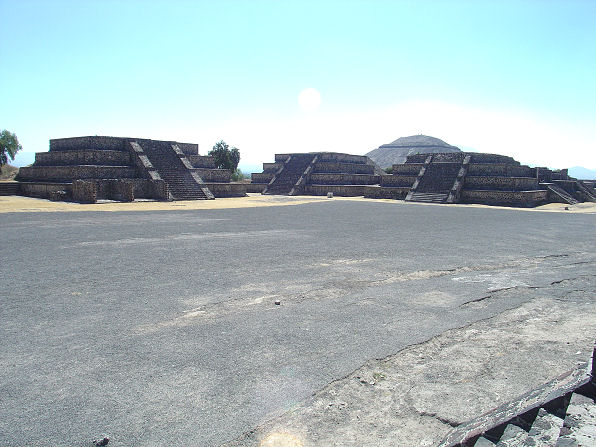 | |
| Teotihuacán: "Plaza Of The Moon." Photo From The Steps Of The "Palace Of Quetzal-Papalotl." Looking East. Photo Taken January 17, 2005. | Teotihuacán: "Plaza Of The Moon." Photo From The Steps Of The Small Pyramid Just North Of The "Palace Of Quetzal-Papalotl." Looking Southeast. "Pyramid Of The Sun," In Background. Photo Taken January 17, 2005. |
| Teotihuacán: "Where Men Became Gods!", "Palace Of Quetzal-Papalotl." We Find It By Looking West At The Southwest Corner Of The "Plaza Of The Moon." The White Columns & Large Jaguar Head Near The Steps Distinguish It. From Other Nearby Structures. Under It, Buried Earlier, Is The "Subestructura de los Caracoles Enplumados," (Substructure of the Feathered Conch Shells) And Adjacent, On The West Side, Is The The "Patio of the Jaguars." Photo November 21, 2011. |
|---|
| Teotihuacán: "Where Men Became Gods!", "Palace Of Quetzal-Papalotl." "Pyramid Of The Moon," At The Top Left. The Palacio de Quetzalpapalotl, Is What We See In The Photo. Under It, Buried Earlier, Is The "Subestructura de los Caracoles Enplumados," (Substructure of the Feathered Conch Shells) And Adjacent, On The Left Is The Edge Of The "Patio of the Jaguars." Photo January 17, 2005. |
| Teotihuacán: "Where Men Became Gods!", "Patio Of The Palace Of Quetzal-Papalotl." Photo January 17, 2005. |
| Teotihuacán: "Where Men Became Gods!", "Patio Of The Palace Of Quetzal-Papalotl." Photo January 17, 2005. |
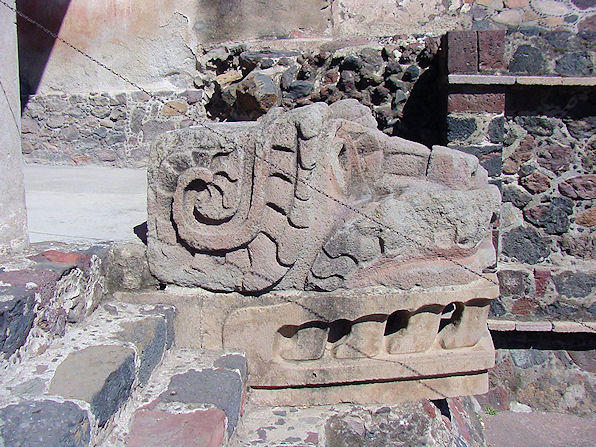 | |
| Teotihuacán: "Palace Of Quetzal Papalotl." "Jaguar Head On North Side Of The Steps From "Plaza Of The Moon." | Teotihuacán: "Palace Of Quetzal Papalotl." Jaguar Head On North Side Of The Steps From "Plaza Of The Moon." |
|---|---|
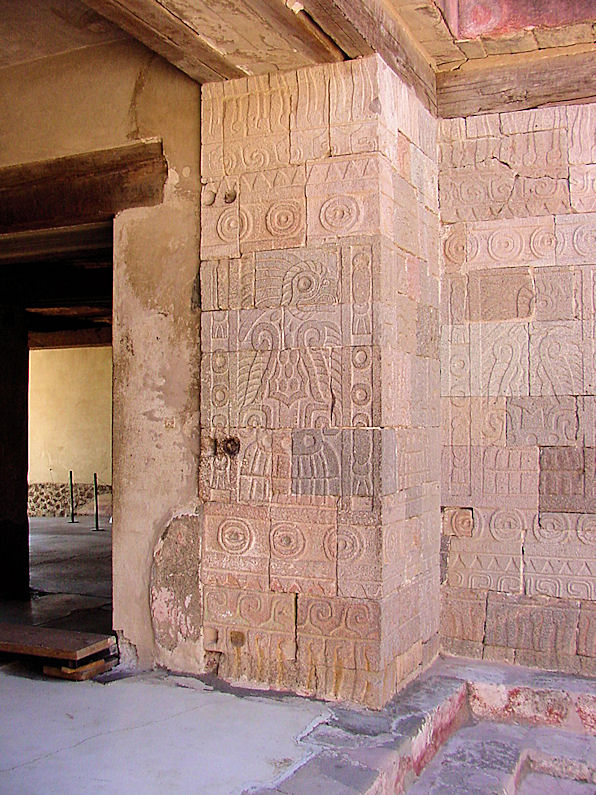 | |
| Teotihuacán: "Palace Of Quetzal Papalotl." Ornate Columns Of The "Patio Of The Palace Of Quetzal-Papalotl." | Teotihuacán: "Palace Of Quetzal Papalotl." Ornate Columns Of The "Patio Of The Palace Of Quetzal-Papalotl." |
 | |
| Teotihuacán: "Palace Of Quetzal Papalotl." Ornate Columns Of The "Patio Of The Palace Of Quetzal-Papalotl." | Teotihuacán: "Palace Of Quetzal Papalotl." Ornate Columns Of The "Patio Of The Palace Of Quetzal-Papalotl." |
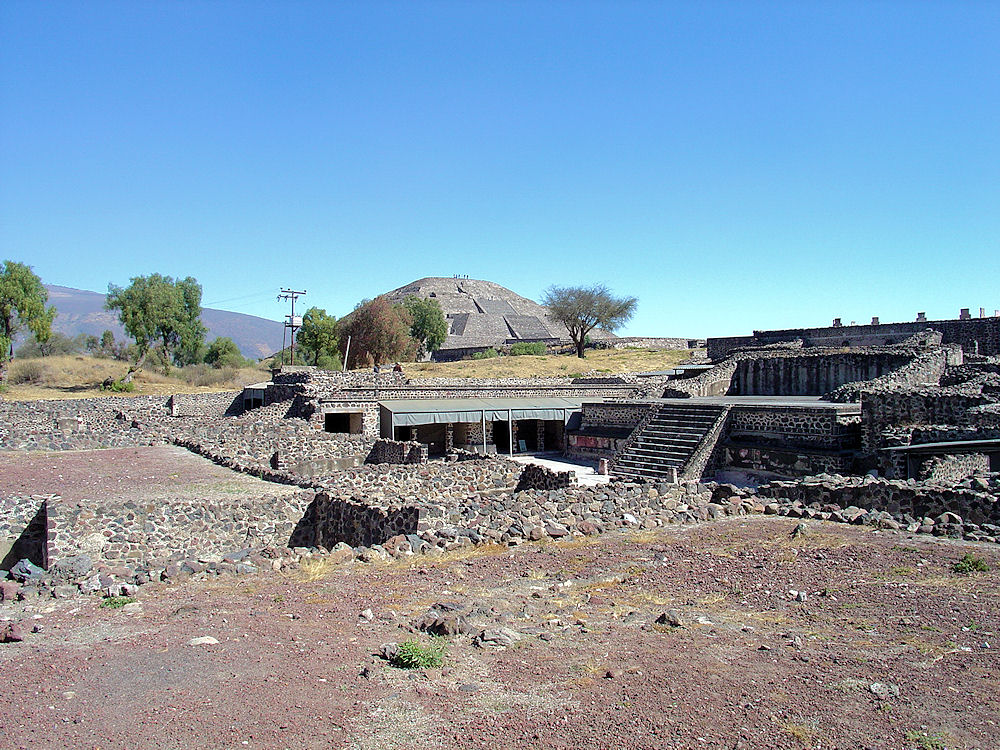 |
| Teotihuacán: "Where Men Became Gods!", "Palace Of Quetzal-Papalotl." "Patio Of The Jaguars." January 17, 2005. |
|---|
| Teotihuacán: "Where Men Became Gods!", "Palace Of Quetzal-Papalotl." "Patio Of The Jaguars." January 17, 2005. |
| Teotihuacán: "Where Men Became Gods!", "Palace Of Quetzal-Papalotl." "Patio Of The Jaguars." January 17, 2005. |
| Teotihuacán: "Palace Of Quetzal Papalotl." "Patio Of The Jaguars." November 21, 2011. | Teotihuacán: "Palace Of Quetzal Papalotl." "Patio Of The Jaguars." November 21, 2011. |
|---|---|
| Teotihuacán: "Palace Of Quetzal Papalotl." "Patio Of The Jaguars." January 17, 2005. | Teotihuacán: "Palace Of Quetzal Papalotl." "Patio Of The Jaguars." January 17, 2005. |
| Teotihuacán: "Palace Of Quetzal Papalotl." Inside The "Patio Of The Jaguars." January 17, 2005. | Teotihuacán: "Palace Of Quetzal Papalotl." Inside The "Patio Of The Jaguars." January 17, 2005. |
| Murals. Teotihuacán: "Palace Of Quetzal Papalotl." "Patio Of The Jaguars." January 17, 2005. | Murals. Teotihuacán: "Palace Of Quetzal Papalotl." "Patio Of The Jaguars." January 17, 2005. |
| Murals. Teotihuacán: "Palace Of Quetzal Papalotl." "Patio Of The Jaguars." January 17, 2005. | Murals. Teotihuacán: "Palace Of Quetzal Papalotl." "Patio Of The Jaguars." January 17, 2005. |
| Teotihuacán: "Where Men Became Gods!", "Temple Of The Feathered Conches." Under The "Palace Of Quetzal Papalotl." January 17, 2005. |
|---|
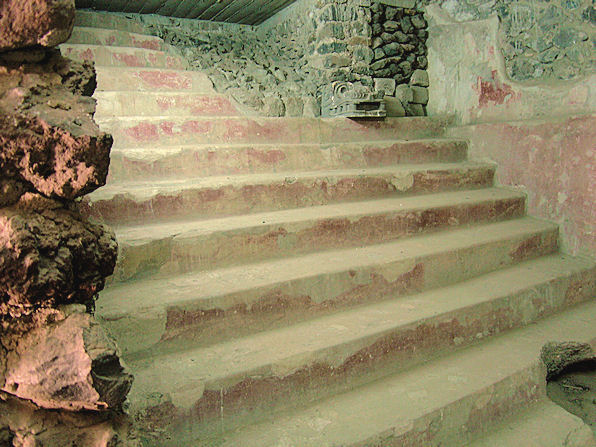 | |
| Teotihuacán: "Where Men Became Gods!" Stairway To The "Temple Of The Feathered Conches." Under The "Palace Of Quetzal Papalotl." January 17, 2005. | Teotihuacán: "Where Men Became Gods!", "Temple Of The Feathered Conches." Under The "Palace Of Quetzal Papalotl." January 17, 2005. |
|---|---|
| Teotihuacán: "Where Men Became Gods!", "Temple Of The Feathered Conches." Under The "Palace Of Quetzal Papalotl." January 17, 2005. | Teotihuacán: "Where Men Became Gods!", "Temple Of The Feathered Conches." Under The "Palace Of Quetzal Papalotl." January 17, 2005. |
| Teotihuacán: "Where Men Became Gods!", Mural From The Tepantitla Compound Showing The "Great Goddess of Teotihuacan." From A Reproduction In The National Museum Of Anthropology In Mexico City. Photo Courtesy: Wikipedia, the free encyclopedia. |
|---|
 | |
| Teotihuacán: "Where Men Became Gods!" Mural From The Tepantitla Compound Showing The "Mountain Stream Mural." Photo Courtesy: Wikipedia, the free encyclopedia. | Teotihuacán: "Where Men Became Gods!" Mural From The Tetitla Compound Showing The "Great Goddess of Teotihuacan." Photo Courtesy: Wikipedia, the free encyclopedia. |
|---|
| "Pyramid Of The Moon" "Plaza Of The Moon" | "Pyramid Of The Moon" Part Of "Plaza Of The Moon" |
|---|---|
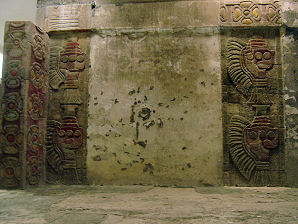 | 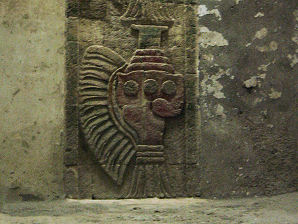 |
| "Temple Of The Feathered Conches" "Palace Of The Jaguars" | "Temple Of The Feathered Conches" |
| "Temple Of The Feathered Conches" "Palace Of The Jaguars" | "Temple Of The Feathered Conches" |
| Parrot Mural "Temple Of The Feathered Conches" | Crocodile Mural "Temple Of The Feathered Conches" |
| "Temple Of The Feathered Conches" "Palace Of The Jaguars" | "Temple Of The Feathered Conches" |
| "Temple Of The Feathered Conches" "Palace Of The Jaguars" | "Temple Of The Feathered Conches" |
| "Temple Of The Feathered Conches" "Palace Of The Jaguars" | "Temple Of The Feathered Conches" |
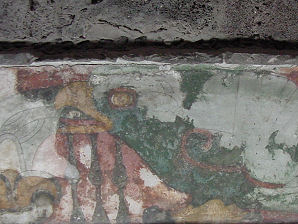 | |
| "Temple Of The Feathered Conches" "Palace Of The Jaguars" | "Temple Of The Feathered Conches" |
| "Temple Of The Feathered Conches" "Palace Of The Jaguars" | "Temple Of The Feathered Conches" |
| "Temple Of The Feathered Conches" "Palace Of The Jaguars" | "Temple Of The Feathered Conches" |
| "Temple Of The Feathered Conches" "Palace Of The Jaguars" | "Temple Of The Feathered Conches" |
Click On Any Of The Following Links By Amazon.Com
For Books & Videos About Teotihuacán. No Obligation!
Other Teotihuacán Pages!
Other Teotihuacán Pages!




